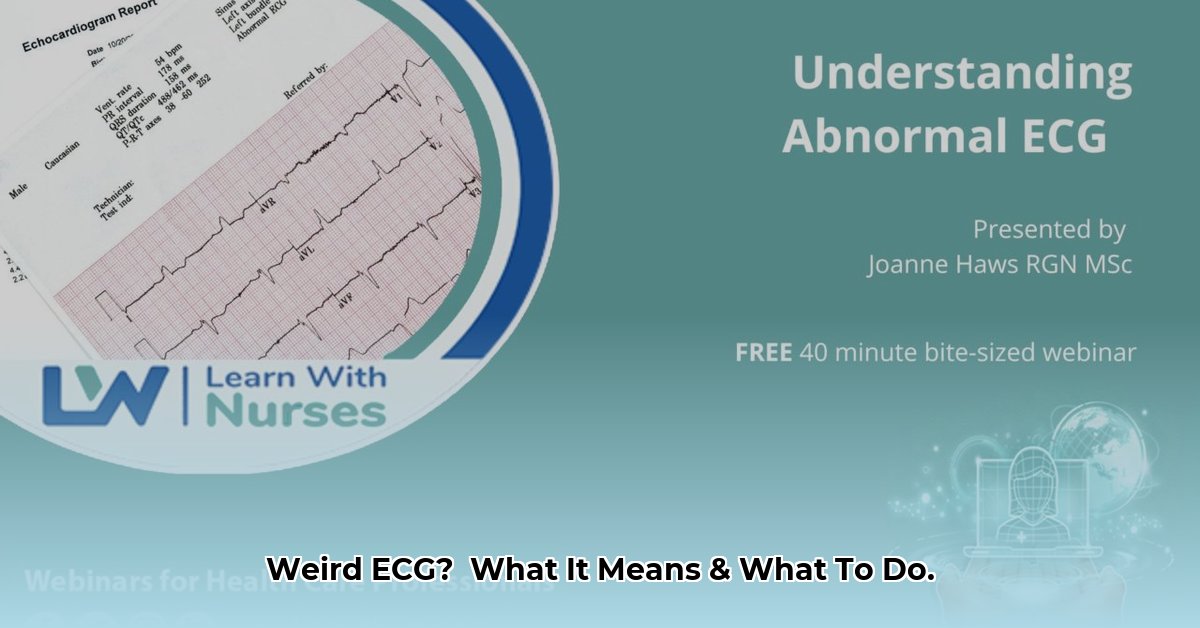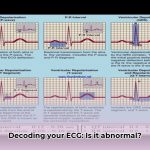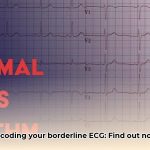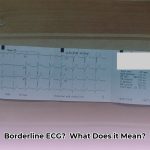Getting an abnormal ECG result can be unsettling. This comprehensive guide explains what an abnormal ECG might mean, explores potential causes, and outlines the next steps in a clear, accessible way. Remember, this information is for educational purposes only and does not replace professional medical advice. Always consult your doctor for personalized guidance.
Decoding the ECG: A Window to Your Heart’s Rhythm
An electrocardiogram (ECG or EKG) records your heart’s electrical activity, providing a snapshot of its rhythm and function. While a simple and painless test, the results can appear complex. Let’s demystify the ECG and explore what an abnormal reading may suggest.
ECG Basics: Understanding the Electrical Signals
Your heart functions like an intricate electrical circuit. The ECG captures the tiny electrical impulses that trigger each heartbeat, displaying them as a series of waves: the P wave, QRS complex, and T wave. Each wave corresponds to a specific phase of your heart’s contraction and relaxation cycle. Doctors analyze these waves – their shape, size, and timing – to assess your heart’s rhythm, rate, and overall health.
What Does a Normal ECG Look Like?
A normal ECG exhibits a regular rhythm, with heartbeats typically occurring between 60 and 100 times per minute. The intervals between the waves also fall within defined ranges. Deviations from these normal patterns may indicate an underlying issue.
Why is My ECG Abnormal? Exploring Potential Causes
An abnormal ECG can result from a variety of factors, some harmless and others more serious. Here are some common reasons for an abnormal ECG:
-
Heart Rhythm Irregularities (Arrhythmias): These are disruptions in the heart’s normal rhythm. You might experience sensations like fluttering, skipped beats, or a racing heart. Conditions such as atrial fibrillation (a rapid, irregular heartbeat), bradycardia (an unusually slow heartbeat), and tachycardia (a rapid heartbeat) can all manifest on an ECG.
-
Coronary Artery Disease (CAD): Plaque buildup in the arteries supplying blood to your heart can restrict blood flow. An ECG may sometimes reveal subtle signs of reduced blood supply, potentially suggesting CAD. More detailed testing, such as a cardiac catheterization, might be needed to confirm a diagnosis.
-
Heart Attack (Myocardial Infarction): This life-threatening event occurs when blood flow to a part of the heart muscle is abruptly cut off. ECGs typically show specific changes, especially ST-segment elevation, during a heart attack.
-
Other Heart Conditions: Various other heart conditions, including heart failure, cardiomyopathy (diseases of the heart muscle), valvular heart disease, and pericarditis (inflammation of the sac surrounding the heart), can cause ECG abnormalities.
-
Non-Cardiac Factors: Factors unrelated to the heart, such as electrolyte imbalances (potassium, calcium, magnesium) or certain medications, can also influence heart electrical activity and produce unusual ECG patterns.
Decoding Your ECG: A Quick Reference Guide
While only a doctor can interpret your ECG definitively, this table provides a simplified overview of common abnormalities and their potential meanings:
| Abnormality | Potential Meaning(s) |
|---|---|
| Rapid Heart Rate | Tachycardia, Atrial Fibrillation, Supraventricular Tachycardia |
| Slow Heart Rate | Bradycardia, Heart Block |
| ST Segment Elevation | Possible Heart Attack, Pericarditis |
| Wide QRS Complex | Bundle Branch Block, Ventricular Tachycardia |
| Prolonged QT Interval | Possible Electrolyte Imbalance, Certain Medications, Congenital Long QT Syndrome |
| Premature Atrial Contractions (PACs) | Often benign, extra beats originating in the atria |
| Premature Ventricular Contractions (PVCs) | Extra beats originating in the ventricles, often benign but may warrant further investigation |
| Left Ventricular Hypertrophy | Thickening of the left ventricle, potentially due to high blood pressure |
What Happens Next? Further Investigations
An abnormal ECG often leads to further testing to pinpoint the cause:
-
Echocardiogram: An ultrasound of the heart to assess its structure, function, and blood flow.
-
Holter Monitor: A portable ECG worn for 24-48 hours, recording heart activity during daily routines to detect intermittent arrhythmias.
-
Event Monitor: Similar to a Holter Monitor but worn for an extended period of time and activated manually to capture symptoms as they occur.
-
Exercise Stress Test: Monitors heart activity during exercise to evaluate its performance under stress and potentially reveal coronary artery disease.
-
Cardiac Catheterization: A thin tube is threaded through a blood vessel to the heart to visualize coronary arteries and identify blockages.
-
Cardiac MRI: Provides detailed information about the structure of the heart and blood flow through the heart’s vessels.
- Coronary CT Angiogram: Uses x-rays and contrast dye to create detailed images of the coronary arteries, revealing the presence of blockages or stenosis (narrowing).
When to Seek Immediate Medical Attention
While most ECG abnormalities are not life-threatening, some symptoms warrant urgent care. Call emergency services immediately if you experience:
- Crushing chest pain or pressure
- Severe shortness of breath
- Sudden dizziness or fainting
- Loss of consciousness
The Importance of Consulting with Your Doctor
This information is for educational purposes only and does not substitute for professional medical advice. Your doctor will consider your medical history, symptoms, and ECG findings to provide a personalized assessment and recommend the most appropriate course of action. Don’t hesitate to discuss any concerns about your heart health with your doctor. They can provide reassurance and guidance.
Disclaimer: This information is for educational purposes only and does not constitute medical advice. Always consult with a qualified healthcare professional for any health concerns or before making any decisions related to your health or treatment.
- How to Generate Electricity from Water at Home for Off-Grid Power - December 6, 2025
- Small Scale Hydropower Brings Sustainable Energy to Rural Areas - December 5, 2025
- Wind Energy Vehicle: Cars Powered by Wind—The Future is Near? - December 5, 2025
















